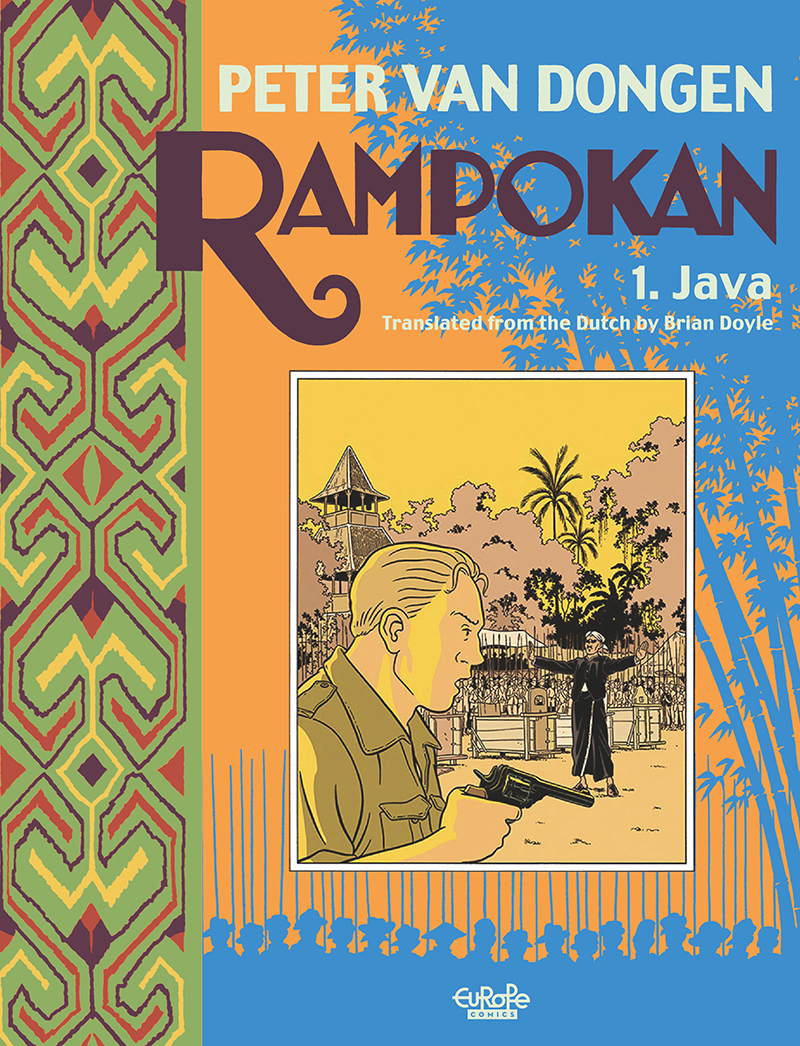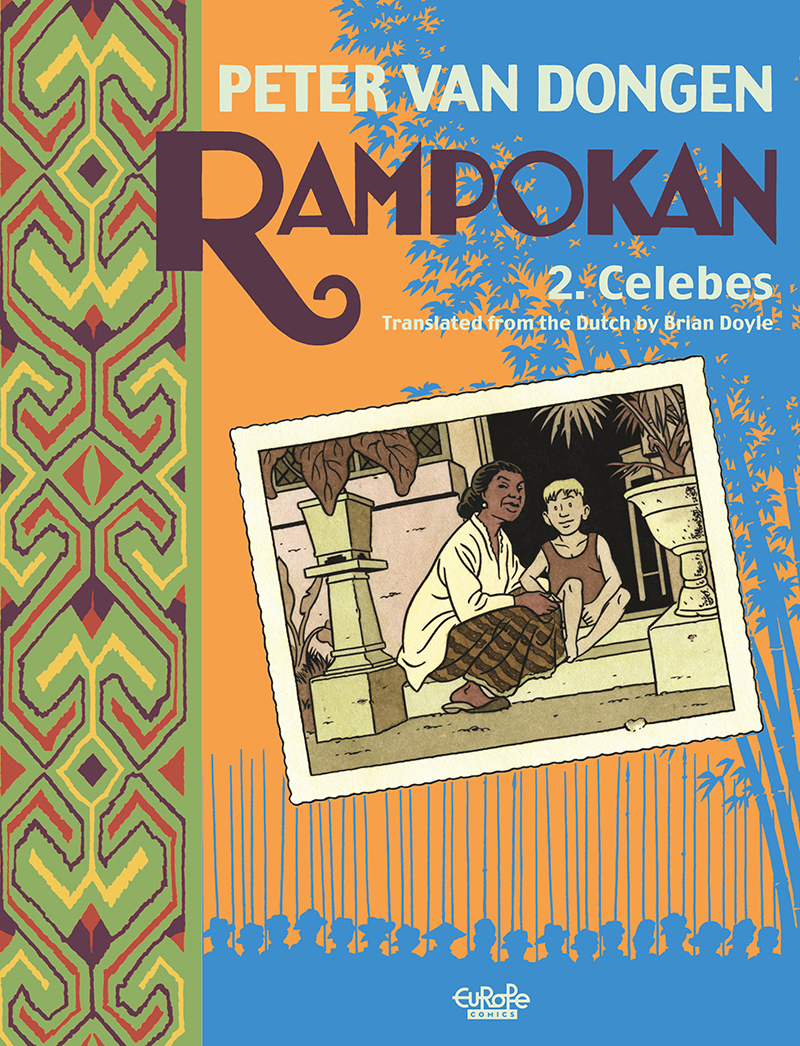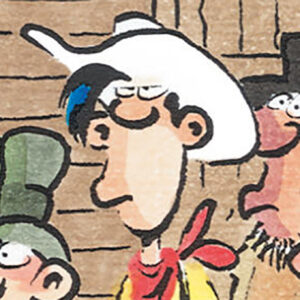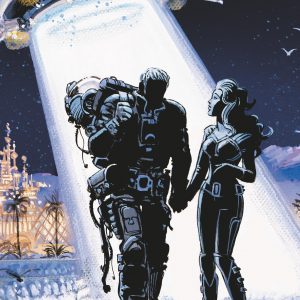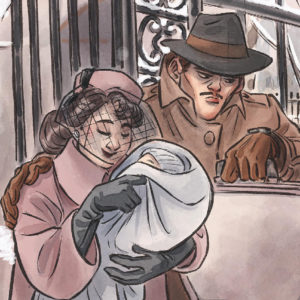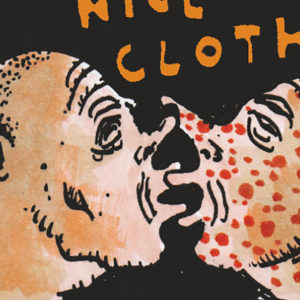Dutch artist Peter van Dongen speaks with comics journalist Aug Stone about the enduring power of his book, Rampokan, the English edition recently released by Europe Comics. Drawn in the ligne claire style of Tintin and Blake & Mortimer, van Dongen’s 1998 comic about the Dutch Indies after World War II continues to be an eye-opening source of information for readers today.
Aug Stone: Were there other big influences for you besides Hergé and E. P. Jacobs?
Peter Van Dongen: I do everything with a brush, and that’s because of Yves Chaland. He’s so fluid, so smooth, especially Bob Fish and Freddy Lombard. I started inking with a brush when I was 17 because I wanted to achieve this as well. For me, it’s easier and quicker. For Rampokan, I did everything with a brush. Chaland’s way of colouring too. If I have a commission job and I don’t know how to colour it, I will always look to Chaland for inspiration. And I still buy everything that is published of his, even though I already have them in a different form. Hermann is also a big influence. Not so much his drawings but his storytelling. That you can show two or three different storylines on a page at the same time. Moebius, Tillieux, Hugo Pratt. Mostly French and Belgian influences. When I was young of course we had superheroes and I’d draw them, but in the end I was mostly into European comics.
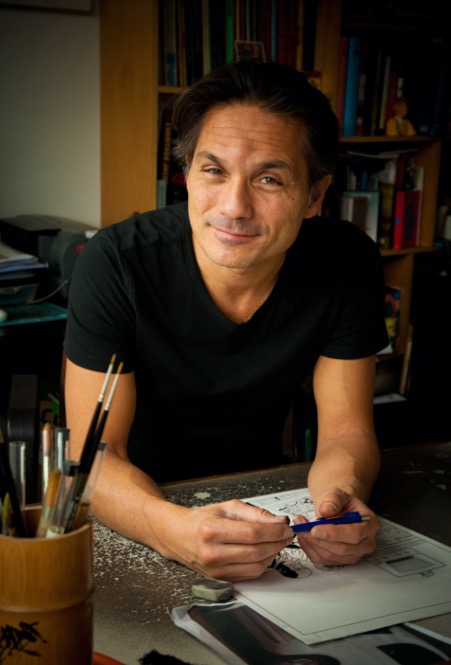
AS: Tell me about your first book.
PVD: It’s called Muizentheater. Again with an animal title – Rampokan means ‘Tiger Fight’ and ‘Muizentheater’ means ‘Theatre Of Mice’. I started it in 1986 when I was 19 and it was ready when I was 23. It’s a classical theme – two brothers who are close when they are young but grow apart as they get older. It takes places during the Depression in the 1930’s. They live in a poor working class neighborhood in Amsterdam. Their father works in the harbor and is always drunk. It finishes just before World War II, and in the epilogue we see what happens to them during the war.
I started working on it right after I quit my band [Peter was the drummer for The Original Talkatives]. I was really young when I drew this. I was dedicated. I did a lot of research into the 1930s. It took me four years between my jobs as a commercial illustrator. It was published by the Dutch division of Casterman so I was really proud, because of the Tintin connection, of course. 1500 copies were printed and sold out. I made my dream come true when I was 23. But then I had to do something else, which became Rampokan.
AS: Give me some history of Rampokan, why you decided to write it in the first place.
PVD: After my first book was published, I was looking for a new story and a childhood memory came to mind. My mother was born in Indonesia. And when we were young, she told me and my brothers that in 1950 she was living in the harbour city of Makassar in East Indonesia while it was being bombed by the Dutch marines. She said you could hear the blast of the guns and a very high whistle but you didn’t know where the grenade would fall. So she and her family took shelter underneath a bed for four days, while the bombs were falling next to their house and there was general panic. So this story of hers suddenly popped up in my memory when I was 23 and was asking myself what kind of book I was going to make next. I realized I didn’t understand anything about her story because I didn’t know anything about the history of Dutch colonization in Indonesia. So I started going to the library in Amsterdam. This was 1990, way before the internet was widely available. I found a shelf with lots of history books about the colonial war of the Dutch against the Indonesians. In 1945, two days after the capitulation of Japan that marked the end of World War II, on the 17th of August, Sukarno and Hatta, two Indonesian politicians, declared Java and Sumatra independent from Holland and the Dutch Indies. From August 17, 1945 until December 1949, there was four years of Indonesian freedom fighters struggling against the Dutch military for Indonesian independence.
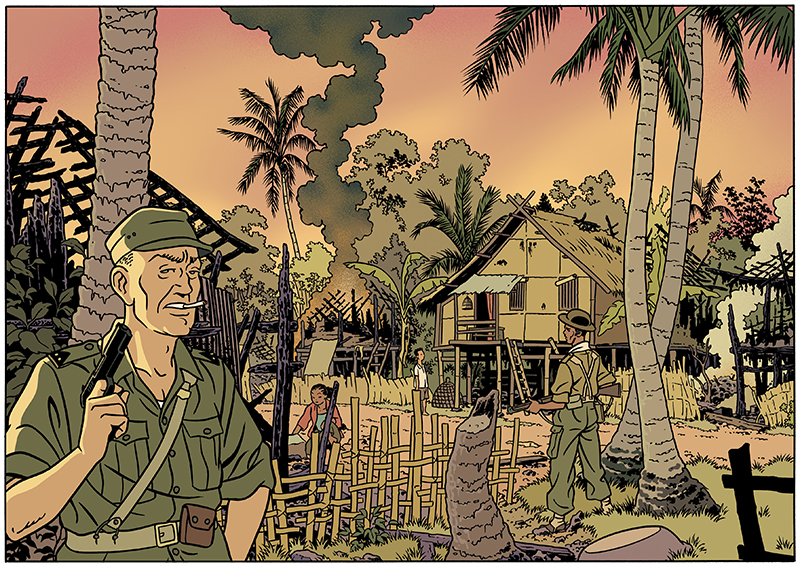
After the Japanese occupation had ended, the Dutch government sent troops to their old colony so that it could return to what it was before World War II. But everything was now changed in the world. Indonesia was the first country of the colonies who started claiming their independence, in 1945. After that came India with Gandhi in 1947, and Vietnam. This was unknown history for me. I was never taught anything at school about this, so I had to learn it myself. In Holland we are used to being taught about World War II in Europe, what the Germans did against the Europeans, against the Jewish. I grew up in what used to be a huge Jewish neighborhood in Amsterdam, and I went to the same school where Anne Frank went. Every day you’re passing this famous portrait of Anne Frank sitting behind her desk. So you are aware from your youngest days what the Germans did in Europe, in Holland, especially in Amsterdam with the Jewish people. But I realized then that even in my 20s I didn’t know anything about WWII in Indonesia, where my mother and my grandparents came from. So for me it was ‘This will be my topic. This will be my story.’ Something in the Dutch East Indies, with the Indonesian struggle for freedom. I didn’t know that it would take eight years for me to finish. The research alone took three years, reading books and watching documentaries.
So Rampokan is actually based on a story of my mother’s. The bombing of the city of Makassar. Celebes, the second book of Rampokan, starts with this bombing of Makassar. But here is a strange thing. My mother had told me that it was four days starting on the 5th of August, 1950. I didn’t know anything about this when I began, but when I started researching, I found out that of course by 1950, Indonesia was already independent. They had become independent in 1949. So it wasn’t the Dutch who were bombing, it was the Indonesian marines, with airplanes, who were fighting against the Dutch military in the city of Makassar. It’s complicated. There were still Dutch soldiers from the Dutch Indies colonial army. Lots of bombs were falling into different neighborhoods, missing their targets. Many civilians were killed. My mother was a child then and confused whether it was Indonesians or Dutch people. But it doesn’t matter, for me it was the starting point of Rampokan.
AS: What does your mother think of the book?
PVD: When I told her in 1990 that I was planning to do something with her history, and the history of her country, I think she was proud. Because she saw that one of her kids was interested in her personal history. I started asking questions about her memories. There had been one family story that was always around. My mother’s father was beheaded by the Japanese. He was a soldier in the Dutch colonial army of the Dutch Indies, and he fought during WWII and was captured by the Japanese. He was in a prison camp for years and then he was beheaded one day after the capitulation of Japan, on August 16th, 1945. Another reason I was curious about the history was because the Tintin adventure The Blue Lotus takes place in Shanghai, with Shanghai divided into different sections – British, French, and Japanese. When I read The Blue Lotus as a child, I was always intrigued by those Japanese soldiers who were planning to cut off Tintin’s head. Because that’s what they did to my grandfather. The Blue Lotus appealed to me because of that fact. Also it was something that I hadn’t learned at school, because you never heard anything about the Japanese occupation during WWII. But I found it in Tintin. As a child you’re looking for reference, that you can match with your own history. The Blue Lotus for me personally was an eye-opener, that you could tell a story with comics about a political situation, the Japanese invading China. Normally comics were always fun, and here I saw that you could tell serious stories with them. Rampokan is my answer to The Blue Lotus. It’s a Tintin-style comic, ligne claire, but I’m telling quite a heavy story.
I think for young Americans who were sent to Vietnam, it’s not much different than Dutch soldiers who were sent from Holland to Indonesia. If you see it as a war story, it’s a young white man sent to another country in the tropics. He doesn’t know anything about the situation and he ends up in a terrible guerilla war with no front. I’ve heard from French readers too that it reminds them of their own colonial affairs in Indochina and then later with Algeria in the 60s. You can view it as a wider, in a way universal, colonial story. Nowadays, it’s a huge topic in Holland, what really happened there in the East. It’s always been covered up before. In 1993, when I was researching the subject, there were maybe only a couple of movies about what had happened. When Rampokan came out in 1998, I was the first who took on this topic of the Indonesian struggle against the Dutch in a comic book, one of the first in a popular media product. And now there’s a new generation who want to know what happened.
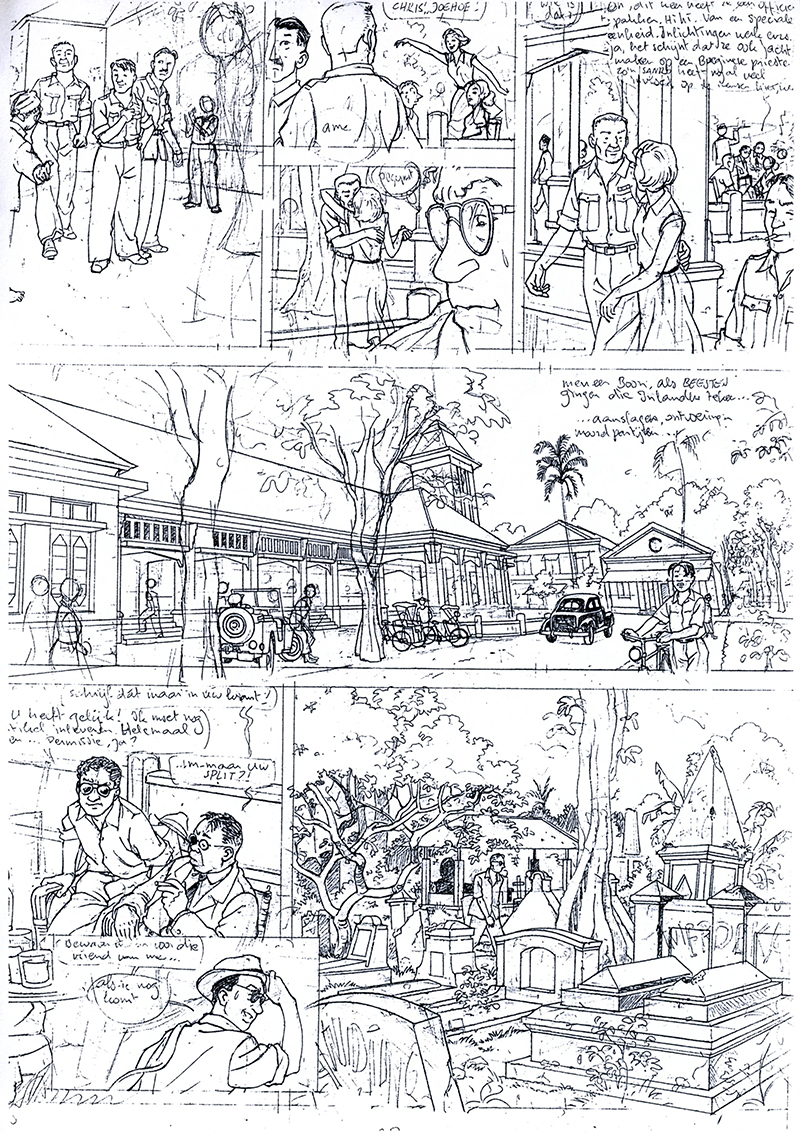
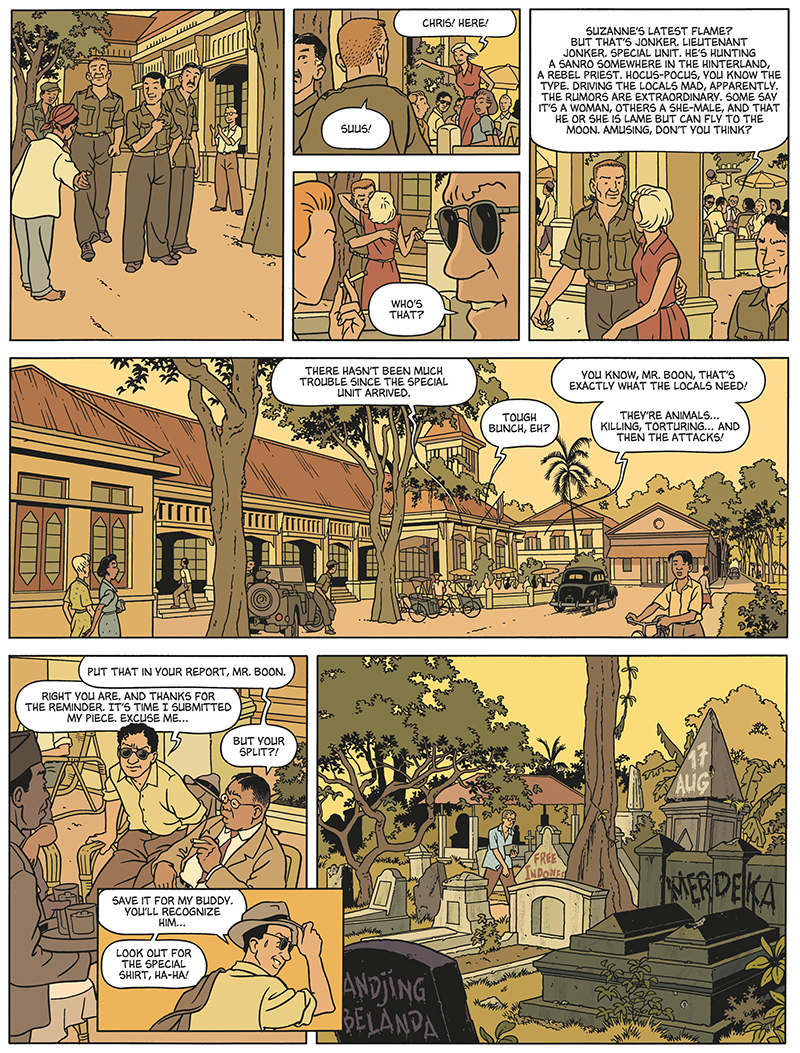
AS: Did you always intend to have two parts, Java and Celebes?
PVD: A friend of mine, the Dutch journalist Martijn Daalder, gave me feedback. I told him the story I had in my head, and he said that’s way too big for one volume. You should divide it into two parts. I already had the title Rampokan, and since the first part takes place on Java and then Johan Knevel goes to Celebes, Martijn suggested I divide it into two books using those islands as the titles. But altogether it still took 13 years to finish the whole work. It was all done between my commercial jobs.
AS: How did Rampokan’s publication affect your life?
PVD: I was 23 when I started the book and eight years later I was 31 when it was published. Now I’ll be 55 in three months. And still I’m going to Indonesia to promote Rampokan. In a way it’s strange. It was an idea from a young man, 23 years old, who thought, well, let’s make a story about the country of my mother, and almost 33 years later, I’m still regularly talking about the book, traveling to different countries because of the book. So it continues to be a huge part of my life. And now there’s a younger generation in Holland who are interested. With Instagram and social media, you get lots of feedback from people who are interested. Lots of Indonesian readers too, young readers who have only had their Indonesian view, they adore it because it’s something that they don’t know. I’m telling stories about misbehavior of Dutch soldiers but also misbehavior of Indonesian people. And of course Indonesian readers don’t know about it because that’s never taught at school. The same way I wasn’t taught anything about Dutch misbehavior at school back then. They don’t learn anything about what the Indonesians did to people like me. I’m a half-blood – half Indonesian, half Dutch. In those days, after the capitulation of Japan, there was this period where thousands and thousands of people like me were killed because they were half-blood. Indonesian freedom fighters slaughtered thousands and just chopped them in pieces. There aren’t many pictures but there were a lot of eye-witnesses. And Indonesian people don’t know about this. When I’m in Indonesia, I’m telling this to journalists and they don’t know. I tell them to start Googling. There’s a certain word ‘bersiap’, which means something like ‘get ready!’, and it was the Indonesian battle cry for when they saw the enemy, the Dutchman. But it meant even Dutch families or Dutch-Indonesian half-bloods, or Chinese who were working with the Dutch. Many Chinese were killed, thousands, because they were linked to the Dutch. So I’m telling them these stories in Indonesia and they are surprised. They learn something from the book then too. So Rampokan still affects my life. I’m still on the road with it.
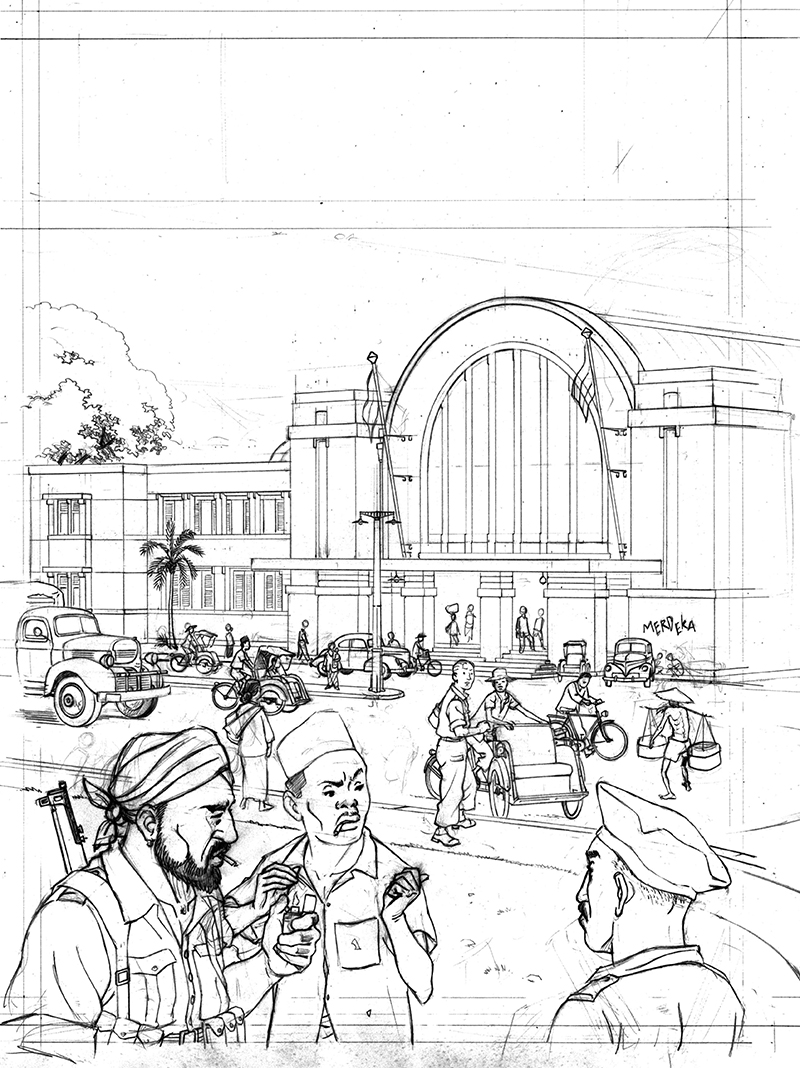
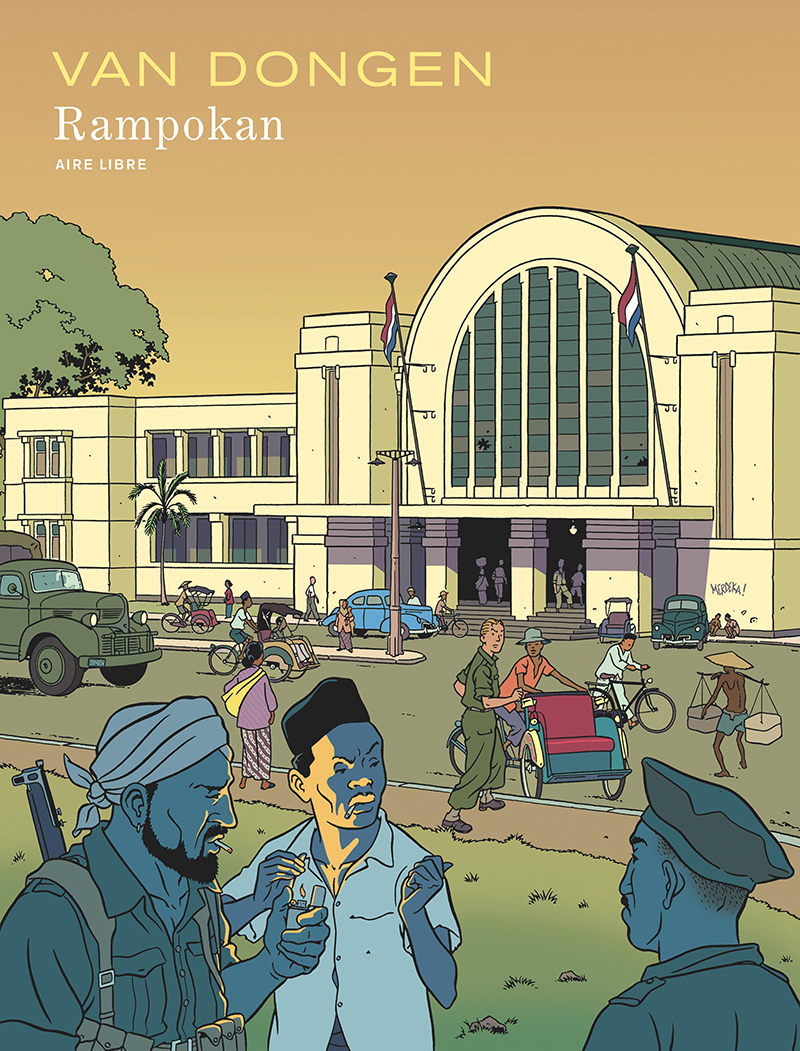
AS: What are you working on now?
PVD: Today I’ve just finished my last work for the new Blake & Mortimer [published in English by Cinebook] album, The Last Swordfish. It’s written by Jean Van Hamme, one of the biggest comics writers in Europe. It will be published in November. Teun Berserik & I took over this series three years ago. This is our third album since 2018. We do half of each album, so if it’s 62 pages we each do 31, but of course we do it in the same original style that Jacobs used. Because it should look like original Blake & Mortimer. During the whole COVID period Teun and I were busy making this book. We are the first Dutch comics artists to take over this series. For Dutch comics artists it’s quite unusual to do something in the French market.
We were talking about the Belgian school influence at the beginning and the fact that I’m now making Blake & Mortimer, it’s weird. I was so influenced by Jacobs and now I’m allowed to make those same scenes again for real. I’m not copying it, I’m doing it. It will be printed and everything. It’s strange. You start comics because of the Belgian school – Jacobs, Hergé – I was six years old when I read them for the first time. And then in your 50s you’re making those same comics. Weird how it all comes together.
Header image : Rampokan © Peter Van Dongen/ Dupuis
